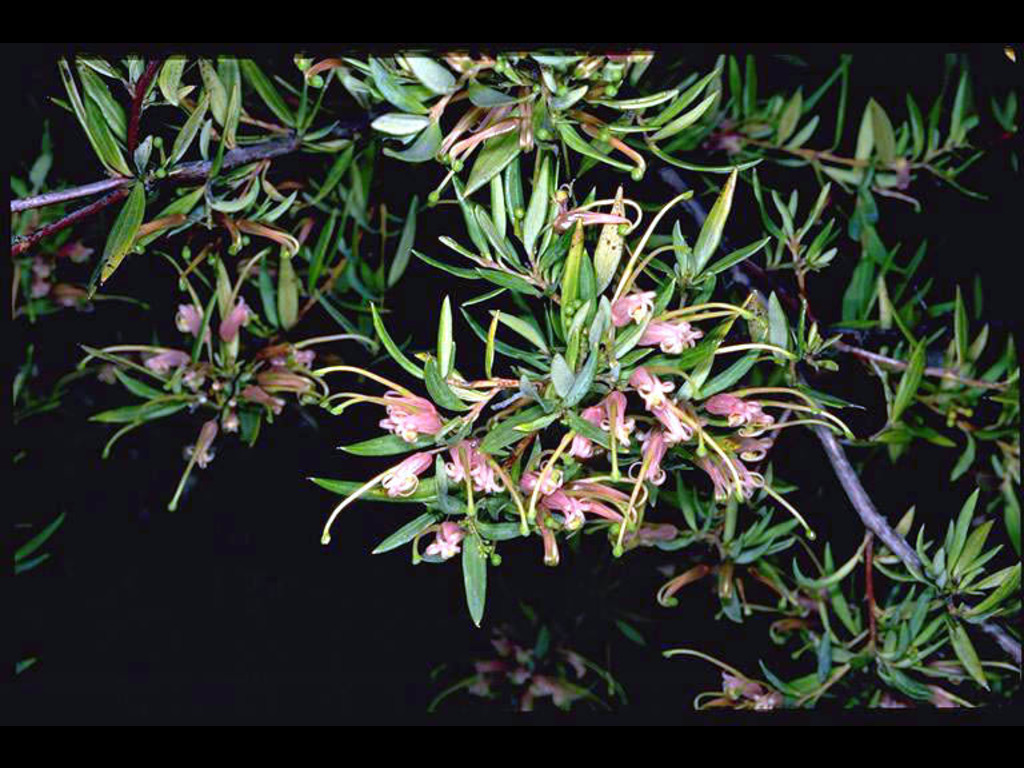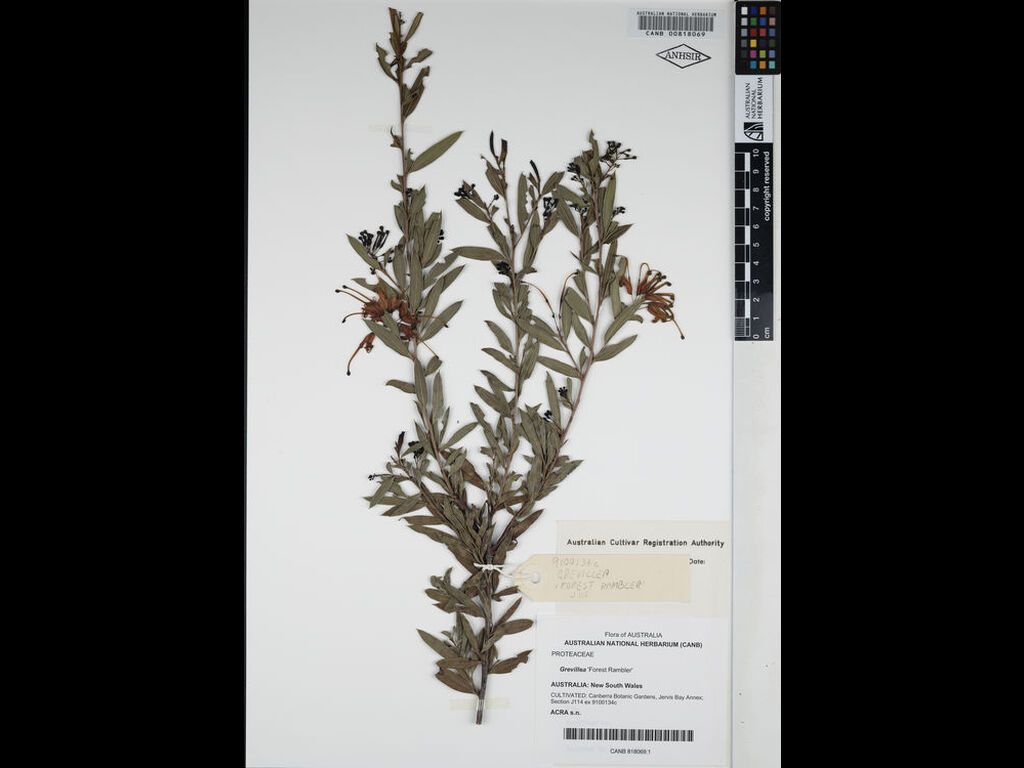Grevillea 'Forest Rambler'
- File Number
- 684
- ACRA Field Book Number
- 478
- Registration Date
- 24/01/2007
- Application Received
- 20/01/1997
- Family
- Proteaceae
- Cultivar Name
- Grevillea 'Forest Rambler'
- Origin
- The origin of this cultivar is unknown. It is thought to have been introduced to cultivation in the 1980s and continues to be widely sold and marketed today for its hardiness and bird attracting ability. Etymology: The name refers to the rambling habit of this cultivar.
- Characteristics
- A sprawling mid-green, bushy, fertile shrub (2-)2.5-3.5 m high 3-6 m wide. Leaves:simple,4-6 cm long, 4-7.5 mm wide, glabrous, elliptic, upper surface flat, mid-green, lower surface pale-green; texture leathery. Flowers:pedicels 7 mm long; p erianth10 mm long, p istil27 mm long; style 16 mm long. Flower Colour: Buds green becoming pink on the lower perianth, utlimately the perianth all pink with limb pale pink. Pistil green. Diagnosis: This cultivar most closely resembles G. shiressii from which it differs in its rambling habit, its shorter leaves with acute apices and its pale pink flowers. Similar hybrids - Grevillea ‘Ruby Clusters’ (syn. G.‘Splendour’ ) closely resembles this cultivar but differs in its deep red flowers.
- Cultivation
- Grevillea ‘ Forest Rambler’ has proven to be extremely vigorous and a very hardy plant for difficult sites. It is drought tolerant and frost hardy. The cultivar grows best in a full sun to semi-shaded situation in well-drained soils of either a clay or sandy nature. It is useful for rapidly covering large areas.
- Publication
- Wrigley, J.W. & Fagg, M. (1988), Australian Native Plants: propagation, cultivation and use in landscaping Edn. 3: 90
- Colour Coding
- RHS Colour Chart 1995 Flowers Perianth: translucent 62c-d Limb: 20b Pistil:143c Leaves: upper surface 147a, lower surface 137c
- Propagation
- Cuttings from semi-firm new growth most of the year
- Applicant Name
- -
- Uses
- Groundcover suitable for mass planting or mixed in a shrubbery
- Availability
- Kuranga Nursery
- ANBG Accession Numbers
- -
- NSL ID
- -

